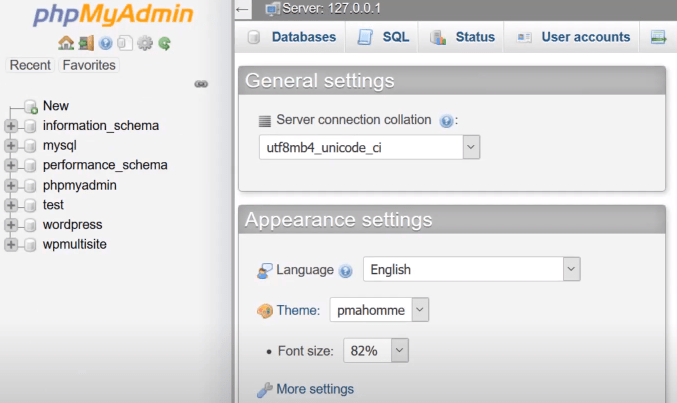Managing dependencies in WordPress plugin development requires meticulous attention to detail and foresight. A plugin dependent on another plugin or module can become a vulnerability point if not monitored appropriately. If the parent plugin is deactivated or missing, the dependent plugin may malfunction or throw errors, ultimately diminishing the user experience and potentially breaking the site. Implementing a mechanism to auto-deactivate a plugin when its dependency is off is an intelligent technique that ensures system robustness and prevents avoidable failures.
TL;DR (Too Long; Didn’t Read)
Auto-deactivating a plugin when its required dependency is deactivated improves website stability and user safety. This functionality can be achieved by checking the active status of the dependency during plugin load and reacting accordingly using WordPress’s built-in functions. It prevents unwanted behavior, reduces errors, and ensures the site continues to function smoothly under varying plugin states. This article outlines how to implement such functionality effectively using best practices and clean code approaches.
Why Auto-Deactivation Matters
The very nature of plugin-based systems like WordPress introduces a level of fragility between components. When Plugin A depends on Plugin B, and Plugin B becomes inactive, the consequence can range from minor warnings to critical system failures. Without proper handling mechanisms, the outcome can be frustrating for both site administrators and end-users encountering broken features.
Here are a few reasons why auto-deactivation adds value:
- Stability: Prevents fatal errors caused by missing functions or classes.
- Security: Dependent plugins might rely on the parent plugin’s data sanitation and authentication mechanisms.
- User Experience: Maintains a smooth and error-free interface for site visitors and administrators.
- Maintenance Friendliness: Saves developers and users from troubleshooting unclear error messages.
Detecting Plugin Dependencies
Before implementing auto-deactivation logic, one needs to reliably detect whether a required dependency is active. WordPress provides a built-in function: is_plugin_active(), which checks whether a plugin is currently active.
However, this function is only available in the admin context and after the plugins_loaded hook or later. In most cases, developers will use this pattern inside the main plugin file or during plugin activation.
include_once( ABSPATH . 'wp-admin/includes/plugin.php' );
if ( ! is_plugin_active( 'parent-plugin/parent-plugin.php' ) ) {
deactivate_plugins( plugin_basename( __FILE__ ) );
wp_die( 'This plugin requires the Parent Plugin to be installed and active.', 'Plugin dependency check', array( 'back_link' => true ) );
}Where to Implement Dependency Checks
To protect against runtime errors and ensure comprehensive validation, integration of the dependency check should occur in the following locations:
- On activation: To prevent Plugin A from being activated if Plugin B is not active.
- During runtime: To deactivate the plugin if the dependency is deactivated during operation.
1. Preventing Activation When Dependency Is Absent
This method uses the register_activation_hook(). The idea is to block the activation process gracefully.
register_activation_hook( __FILE__, 'check_plugin_dependencies' );
function check_plugin_dependencies() {
include_once( ABSPATH . 'wp-admin/includes/plugin.php' );
if ( ! is_plugin_active( 'parent-plugin/parent-plugin.php' ) ) {
deactivate_plugins( plugin_basename( __FILE__ ) );
wp_die( 'This plugin requires the Parent Plugin to be active.', 'Plugin activation error', array( 'back_link' => true ) );
}
}This snippet ensures that the plugin is never activated unless its required dependency is present and running.
2. Auto-Deactivation During Runtime
Sometimes, a user might deactivate the parent plugin after the child plugin is already running. If unmonitored, this results in functionality errors. To handle this case, one can use the plugins_loaded hook.
add_action( 'plugins_loaded', 'runtime_dependency_check' );
function runtime_dependency_check() {
include_once( ABSPATH . 'wp-admin/includes/plugin.php' );
if ( ! is_plugin_active( 'parent-plugin/parent-plugin.php' ) ) {
deactivate_plugins( plugin_basename( __FILE__ ) );
if ( is_admin() ) {
add_action( 'admin_notices', function() {
echo '<div class="notice notice-error"><p>Child Plugin has been deactivated because Parent Plugin is not active.</p></div>';
});
}
}
}This approach ensures that the child plugin will instantly disable itself whenever the required plugin is no longer active, maintaining system integrity.

Handling Multi-Level Dependencies
There are cases where a plugin may depend on more than one other plugin or a chain of dependencies may exist. Handling these can be done using arrays and looping structures.
$required_plugins = array(
'parent-plugin/parent-plugin.php',
'another-plugin/another-plugin.php'
);
foreach ( $required_plugins as $plugin ) {
if ( ! is_plugin_active( $plugin ) ) {
deactivate_plugins( plugin_basename( __FILE__ ) );
wp_die( 'One or more required plugins are not active.', 'Dependency Error', array( 'back_link' => true ) );
}
}In a multi-dependency environment, it’s ideal to provide granular feedback to the user, clearly stating which plugin(s) failed the dependency check.
Considerations & Best Practices
While auto-deactivation is a practical and protective measure, caution and clarity are essential to maintain a user-friendly interface and avoid confusion.
Follow these principles:
- Communicate Clearly: Always inform the admin why a plugin was deactivated, ideally with instructions on how to resolve it.
- Avoid Silent Failures: Never fail silently; admins should know what happened and why.
- Provide Contextual Messages: Make messages relevant, including plugin names, and ideally link to plugins or settings.
- Graceful Exit: If a plugin can’t run due to a missing dependency, it should deactivate itself early to avoid loading resources unnecessarily.

Future Automation and Plugin Management Tools
As WordPress evolves, managing plugin compatibility and dependencies will become more nuanced. Tools such as TGMPA (TGM Plugin Activation) already provide frameworks to require or recommend plugins programmatically.
Although TGMPA primarily suits themes requiring plugins, developers building plugin ecosystems can leverage it to deliver a smoother onboarding and dependency resolution experience for users.
In addition, there are proposals and growing discussions in the WordPress development community to incorporate native dependency management directly into the plugin repository infrastructure. This long-term vision aims to support better handling of required libraries, plugins, and compatibility metadata, all through core APIs or WP-CLI tools.
Conclusion
Auto-deactivation is a preventative and protective strategy in plugin development that upholds system integrity. With proper implementation during activation and runtime, dependent plugins can behave responsibly, minimizing the risk of breaking a site.
Whether you’re building a small extension for a larger plugin or launching a multi-functional suite, applying automatic deactivation safeguards not only your product’s performance but also your reputation as a conscientious developer.
Ensure your plugins play well within the plugin ecosystem—with graceful failures, helpful messages, and proactive dependency management. In the end, the goal is simple: seamless, safe, and sustainable functionality for every WordPress site.

